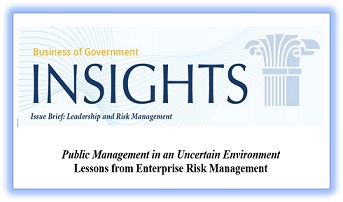
Issue Brief - Public Management in an Uncertain Environment: Lessons from Enterprise Risk Management

Harvard Business School Professor Emeritus John Kotter has proposed that business organizations develop networks internally to help their traditional hierarchies function in today’s fast-changing environment. Government too finds itself increasingly beset by difficult problems that challenge the ability of departments and agencies to respond promptly and appropriately. Kotter proposes that companies adopt a “dual operating system” of the traditional organizational hierarchy joined with one or more internal networks that can liberate big companies from the constraints on creativity and agility that a corporate hierarchy imposes. A process in government that reflects Kotter’s dual operating system is Enterprise Risk Management (ERM). While Kotter focuses primarily on private companies, his work also applies to government organizations. His idea of a dual operating system explains why ERM can be so effective in government agencies. ERM in turn shows how to apply Kotter’s dual operating system to increase the performance and agility of government agencies.
The present paper provides (1) an introduction to John Kotter’s dual operating system model, (2) an overview of Enterprise Risk Management as it operates in government organizations, (3) lessons from ERM about how to apply the dual operating system model to government organizations, and (4) opportunities for expanding the dual operating system model from ERM to operations of government organizations more broadly.



